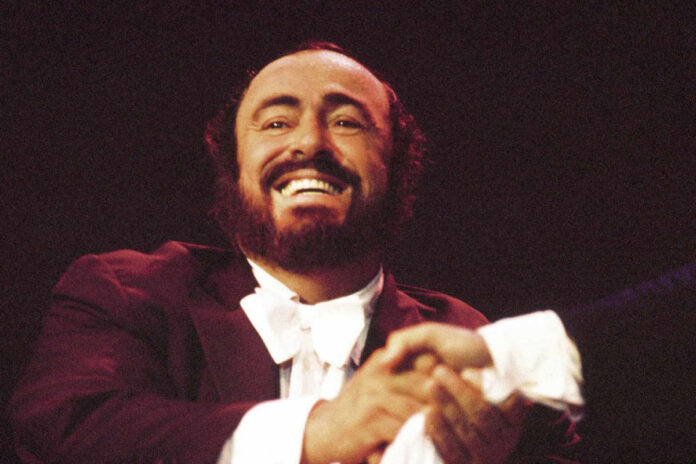Luciano Pavarotti, one of the most celebrated and influential operatic tenors of the 20th century, captivated audiences worldwide with his powerful voice, charismatic stage presence, and larger-than-life personality. From his humble beginnings in Modena, Italy, to becoming a global superstar, Pavarotti’s life and career are a testament to his extraordinary talent and enduring legacy. This article delves into Pavarotti’s life, his significant contributions to opera, and his lasting impact on the world of music.
Early Life and Background
Birth and Family
Luciano Pavarotti was born on October 12, 1935, in Modena, Italy. His father, Fernando Pavarotti, was a baker and an amateur tenor, while his mother, Adele Venturi, worked in a cigar factory. Growing up in a modest household, Pavarotti was exposed to music at an early age, often listening to his father’s recordings of famous tenors like Enrico Caruso and Beniamino Gigli.
Early Musical Influences
Pavarotti’s early musical influences came from his father’s passion for opera and the local church choir, where he began singing as a child. His love for music grew as he joined the Corale Rossini, a local choir, with which he won his first singing competition at the age of 19. Despite his burgeoning talent, Pavarotti initially pursued a career as a teacher, enrolling in a teacher training college.
Training and Early Career
Formal Vocal Training
Pavarotti’s vocal talent did not go unnoticed, and he began formal training with Arrigo Pola, a respected teacher and tenor, and later with Ettore Campogalliani. These formative years were crucial in developing Pavarotti’s technique and understanding of operatic performance. Pola and Campogalliani instilled in him the discipline and artistry required to succeed in the demanding world of opera.
Early Performances
Pavarotti made his professional operatic debut in 1961, playing Rodolfo in Puccini’s “La Bohème” at the Teatro Municipale in Reggio Emilia. His performance was met with critical acclaim, marking the beginning of a remarkable career. Over the next few years, Pavarotti performed in various Italian opera houses, honing his craft and gaining valuable experience.
Rise to International Fame
Breakthrough at Covent Garden
Pavarotti’s international breakthrough came in 1963 when he was invited to perform at the Royal Opera House in Covent Garden, London, as Rodolfo in “La Bohème.” His performance received rave reviews, establishing him as a rising star in the opera world. This success led to further engagements at prestigious opera houses, including La Scala in Milan and the Metropolitan Opera in New York.
The King’s Reign at the Met
In 1972, Pavarotti’s performance in Donizetti’s “La Fille du Régiment” at the Metropolitan Opera catapulted him to superstardom. His rendition of the aria “Ah! Mes amis,” which features nine high Cs, earned him the nickname “King of the High Cs” and resulted in an unprecedented 17 curtain calls. This performance solidified Pavarotti’s reputation as one of the greatest tenors of his generation.
Collaboration with Herbert von Karajan
A significant milestone in Pavarotti’s career was his collaboration with the legendary conductor Herbert von Karajan. Their partnership resulted in several acclaimed recordings and performances, including Verdi’s “Requiem” and Puccini’s “Tosca.” Von Karajan’s exacting standards and musical insights helped Pavarotti refine his technique and artistry, contributing to his continued growth as a performer.
Major Roles and Performances
Signature Roles
Pavarotti’s career was marked by several signature roles that showcased his extraordinary vocal abilities and dramatic talent. Some of his most famous roles include:
- Rodolfo in “La Bohème”: Pavarotti’s portrayal of the lovelorn poet remains one of his most beloved performances.
- Calaf in “Turandot”: His rendition of “Nessun dorma” from Puccini’s “Turandot” became an iconic performance, often associated with Pavarotti’s legacy.
- Edgardo in “Lucia di Lammermoor”: Pavarotti’s powerful and emotional portrayal of Edgardo in Donizetti’s opera is widely acclaimed.
- Cavaradossi in “Tosca”: His performance as the passionate artist Cavaradossi showcased his dramatic and vocal prowess.
Collaborations with Other Artists
Throughout his career, Pavarotti collaborated with numerous renowned artists, including fellow opera stars like Joan Sutherland, Renata Tebaldi, and Plácido Domingo. These collaborations resulted in some of the most memorable performances in operatic history. Pavarotti’s partnerships extended beyond the opera world, as he worked with popular musicians like Elton John, Sting, and Bono, bringing opera to a broader audience.
Expanding Opera’s Reach
The Three Tenors
One of the most significant moments in Pavarotti’s career was the formation of The Three Tenors, alongside Plácido Domingo and José Carreras. Their first concert, held on July 7, 1990, at the Baths of Caracalla in Rome, coincided with the FIFA World Cup final. The event was a massive success, attracting a global audience and resulting in one of the best-selling classical albums of all time. The Three Tenors’ subsequent concerts and recordings played a crucial role in popularizing opera and introducing it to millions of new fans worldwide.
Pavarotti and Friends
Pavarotti’s desire to bring opera to a wider audience also led to the creation of the “Pavarotti and Friends” concerts. These annual charity events, held in his hometown of Modena, featured collaborations with a diverse range of artists from various musical genres. The concerts raised millions of dollars for humanitarian causes and showcased Pavarotti’s ability to bridge the gap between classical and popular music.
Later Years and Legacy
Final Performances and Retirement
As Pavarotti’s career progressed, he continued to perform at major opera houses and concert halls around the world. However, health issues began to take their toll, and in 2004, he announced his farewell tour. Despite his declining health, Pavarotti’s final performances were met with immense admiration and emotional farewells from his fans.
Teaching and Mentoring
In his later years, Pavarotti dedicated himself to teaching and mentoring young singers. He conducted masterclasses and provided guidance to aspiring opera stars, sharing his vast knowledge and experience. Pavarotti’s commitment to nurturing new talent ensured that his legacy would continue through the next generation of performers.
Death and Commemoration
Luciano Pavarotti passed away on September 6, 2007, in Modena, after a battle with pancreatic cancer. His death was mourned by fans and fellow musicians worldwide, and numerous tributes were held in his honor. Pavarotti’s legacy is commemorated through various foundations, scholarships, and memorials that continue to support the arts and humanitarian causes.
Major Recordings and Awards
Acclaimed Recordings
Pavarotti’s extensive discography includes numerous acclaimed recordings that showcase his exceptional talent. Some of his most celebrated recordings include:
- “The Essential Pavarotti”: A compilation album featuring some of his most famous arias and songs, which became one of the best-selling classical albums of all time.
- “Verdi: Requiem”: A powerful recording of Verdi’s masterpiece, conducted by Herbert von Karajan, highlighting Pavarotti’s dramatic and vocal prowess.
- “Puccini: La Bohème”: A recording of Puccini’s beloved opera, featuring Pavarotti’s iconic portrayal of Rodolfo.
Awards and Honors
Throughout his illustrious career, Pavarotti received numerous awards and honors in recognition of his contributions to music. These include multiple Grammy Awards, the Kennedy Center Honors, and the Grammy Lifetime Achievement Award. Pavarotti was also appointed a Commander of the Order of Merit of the Italian Republic and received the Freedom of the City of London, among other accolades.
Influence on Opera and Popular Culture
Impact on Opera
Pavarotti’s influence on the world of opera is immeasurable. His powerful voice, charismatic stage presence, and dedication to his craft set a new standard for operatic performance. Pavarotti’s ability to connect with audiences on an emotional level made opera accessible and appealing to a broader audience, ensuring the genre’s continued relevance and vitality.
Bridging Classical and Popular Music
Pavarotti’s collaborations with popular musicians and his participation in events like The Three Tenors and “Pavarotti and Friends” concerts helped bridge the gap between classical and popular music. By bringing opera to mainstream audiences, Pavarotti played a crucial role in expanding the genre’s reach and fostering a greater appreciation for classical music.
Legacy and Continued Influence
Pavarotti’s legacy continues to inspire and influence musicians and opera lovers around the world. His recordings remain popular, and his performances are studied by aspiring singers. Pavarotti’s commitment to teaching and mentoring young talent has left a lasting impact on the next generation of opera stars, ensuring that his influence will endure for years to come.
Personal Life and Character
Relationships and Family
Pavarotti’s personal life was marked by both joy and turmoil. He was married twice, first to Adua Veroni in 1961, with whom he had three daughters, and later to his former personal assistant, Nicoletta Mantovani, in 2003, with whom he had a daughter. Pavarotti’s larger-than-life personality and his love for his family and friends were evident in his interactions both on and off stage.
Humanitarian Efforts
Pavarotti was deeply committed to humanitarian causes, using his fame and influence to support various charitable organizations. The “Pavarotti and Friends” concerts raised millions of dollars for causes such as war-torn Bosnia, children affected by war, and victims of natural disasters. Pavarotti’s generosity and compassion were hallmarks of his character, further endearing him to fans worldwide.
FAQs
1. What are some of Luciano Pavarotti’s most famous roles?
Some of Luciano Pavarotti’s most famous roles include Rodolfo in “La Bohème,” Calaf in “Turandot,” Edgardo in “Lucia di Lammermoor,” and Cavaradossi in “Tosca.”
2. How did Luciano Pavarotti influence the world of opera?
Luciano Pavarotti influenced the world of opera through his extraordinary vocal talent, charismatic stage presence, and dedication to his craft. His ability to connect with audiences on an emotional level helped make opera more accessible and appealing to a broader audience.
3. What were some of Pavarotti’s notable collaborations?
Pavarotti collaborated with numerous renowned artists, including Joan Sutherland, Renata Tebaldi, Plácido Domingo, and José Carreras. He also worked with popular musicians such as Elton John, Sting, and Bono, bridging the gap between classical and popular music.
4. How did Pavarotti contribute to humanitarian causes?
Pavarotti contributed to humanitarian causes through his “Pavarotti and Friends” concerts, which raised millions of dollars for various charitable organizations. He supported causes such as war-torn Bosnia, children affected by war, and victims of natural disasters.
5. What is Luciano Pavarotti’s lasting legacy?
Luciano Pavarotti’s lasting legacy is his extraordinary contribution to opera and music. His powerful voice, charismatic stage presence, and dedication to his craft have left an indelible mark on the world of music, inspiring and captivating audiences worldwide. His influence continues through his recordings, performances, and the next generation of opera stars he mentored.
Conclusion
Luciano Pavarotti’s contributions to opera and music are unparalleled. His extraordinary voice, charismatic stage presence, and dedication to his craft have left an indelible mark on the world of music. From his early performances in Italian opera houses to his international fame as one of The Three Tenors, Pavarotti’s legacy continues to inspire and captivate audiences around the globe. As one of Italy’s greatest musical legends, Luciano Pavarotti’s impact will be felt for generations to come, ensuring that his name remains synonymous with excellence in opera and music.

